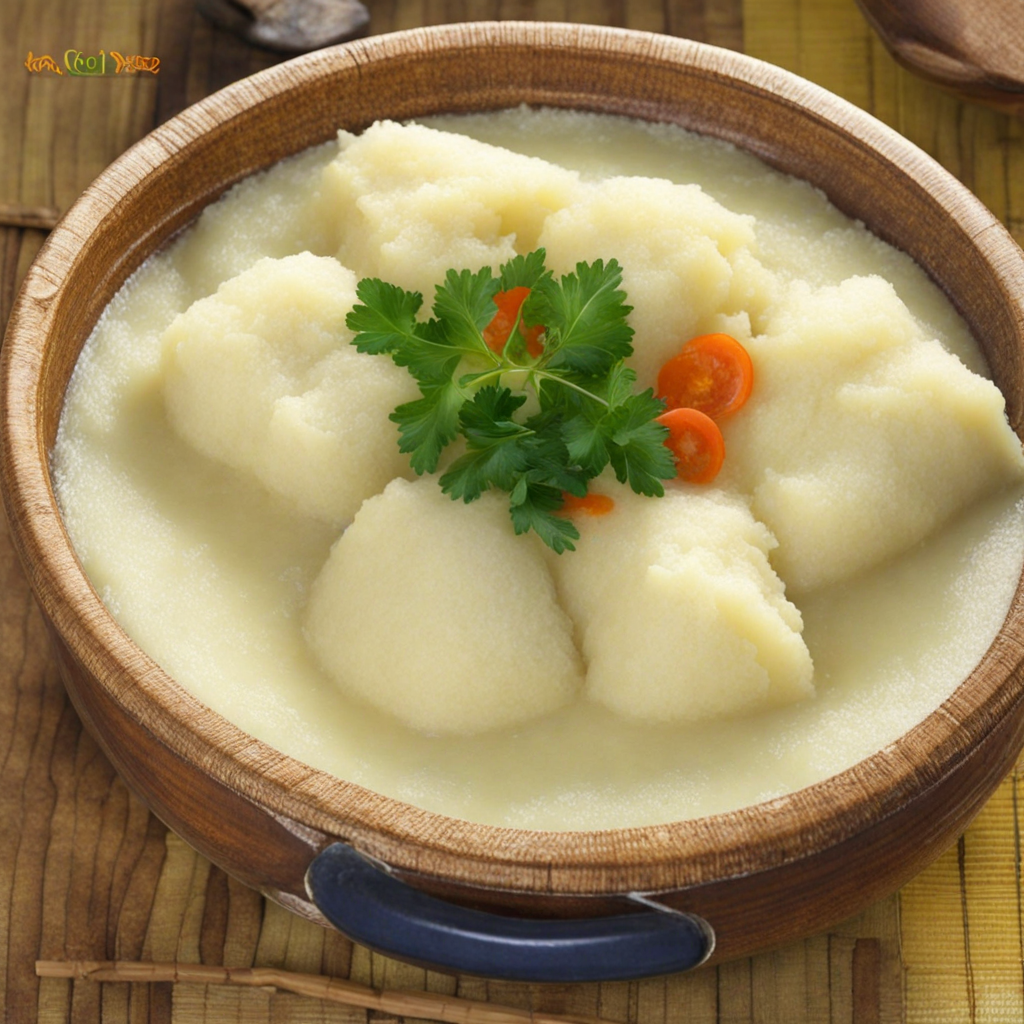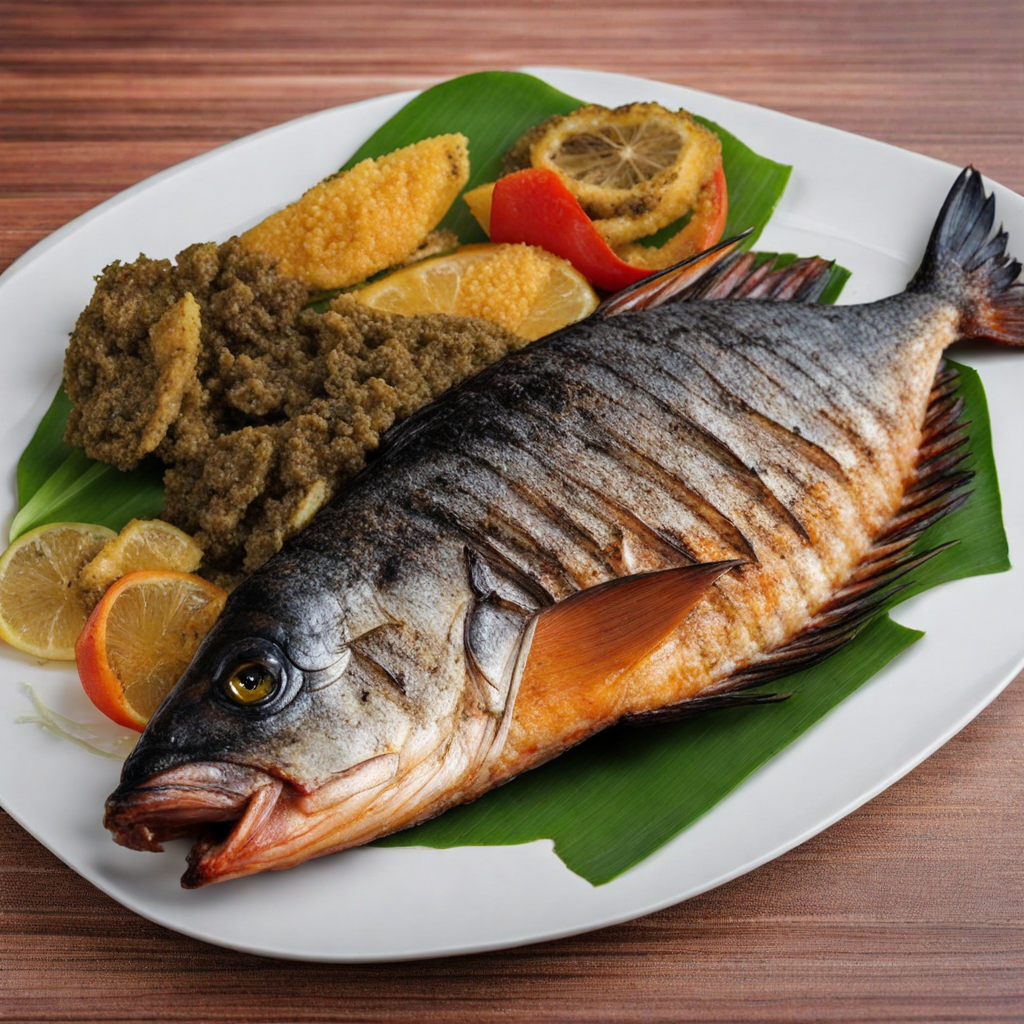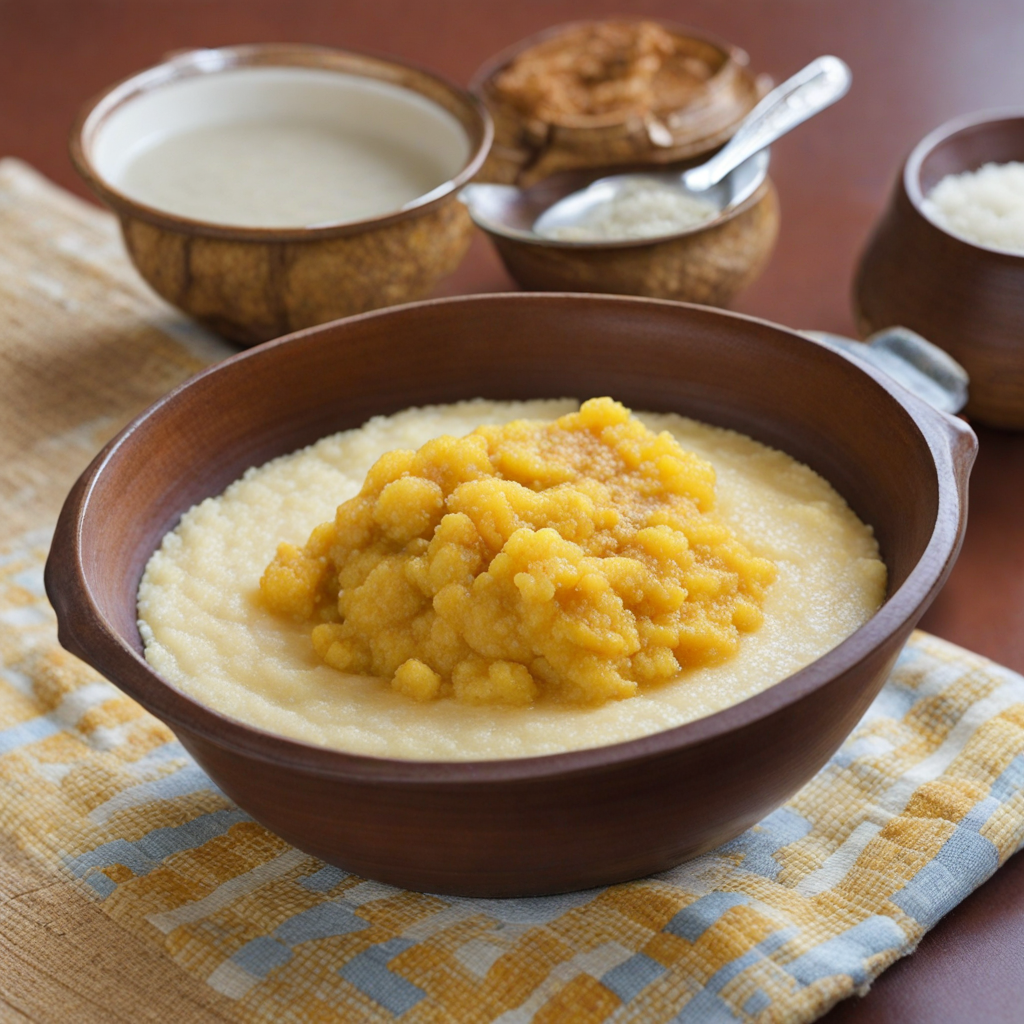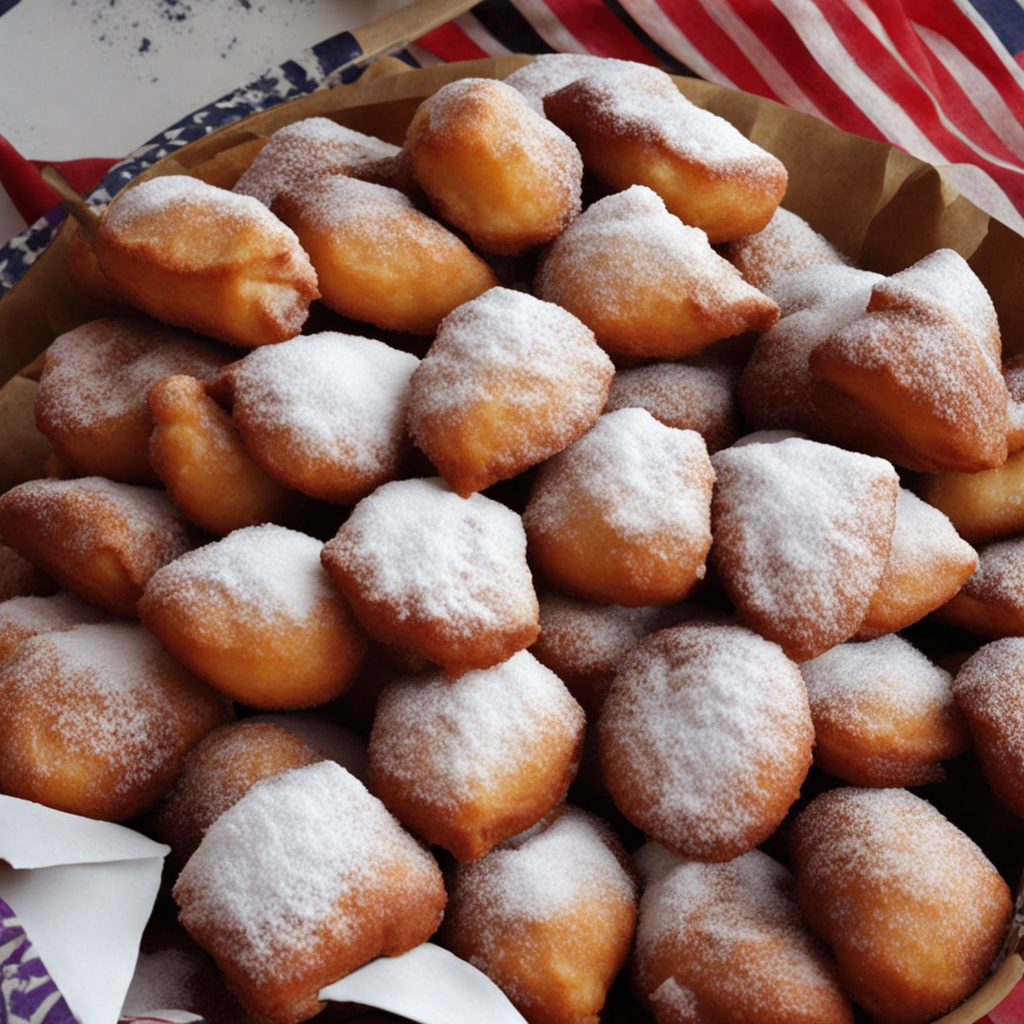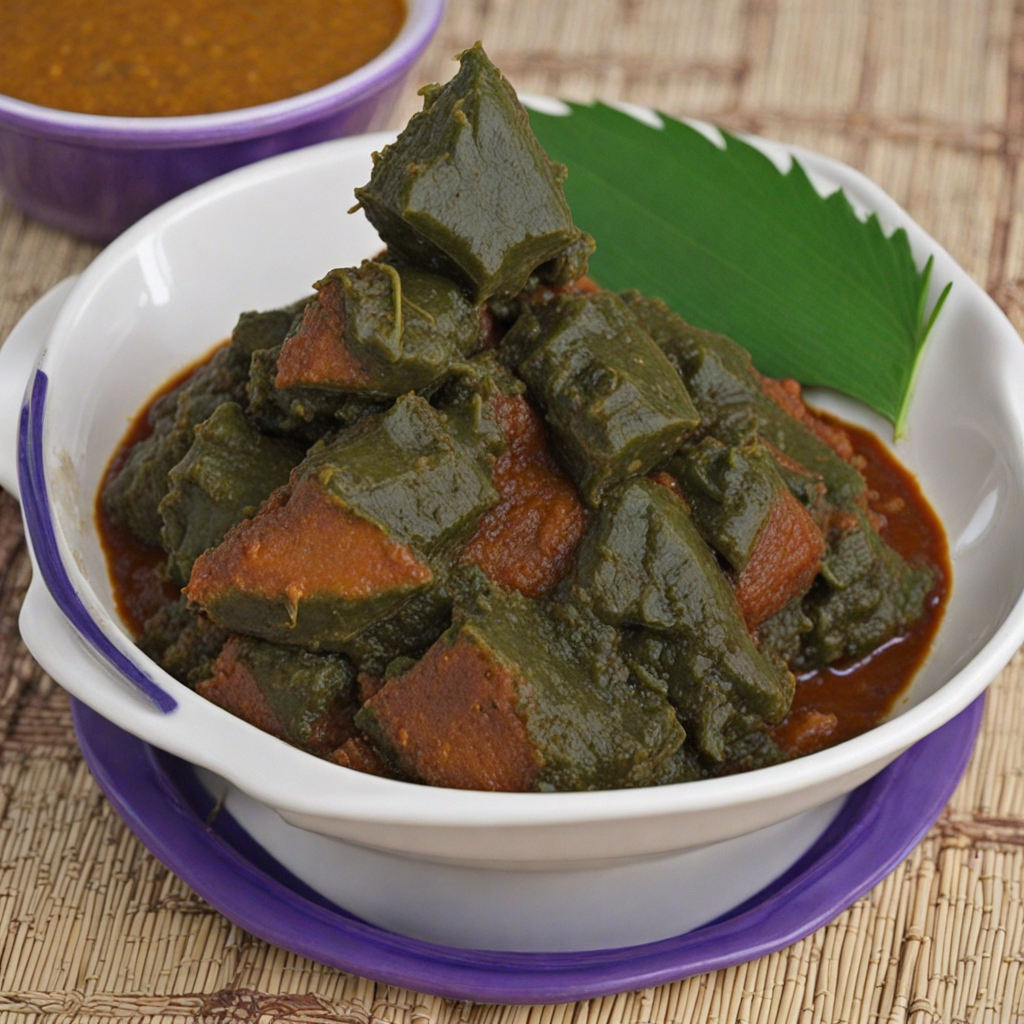Fufu
Fufu is a staple dish in the Democratic Republic of the Congo, characterized by its unique texture and versatility. Made primarily from starchy ingredients such as cassava, yams, or plantains, fufu is typically boiled, pounded, and then molded into a smooth, thick dough-like consistency. The process of preparation is labor-intensive, often involving multiple steps to ensure the final product achieves the desired elasticity and flavor. The result is a soft, white or slightly yellowish mass that serves as a perfect accompaniment to various stews and sauces, enhancing the overall dining experience with its neutral yet comforting taste. One of the most appealing aspects of fufu is its ability to absorb the flavors of the dishes it is served with. In the Democratic Republic of the Congo, fufu is often paired with rich, savory sauces made from meats, vegetables, and spices. These sauces, which can range from spicy to mildly flavored, transform fufu into a delightful canvas that complements the intricate and bold tastes of Congolese cuisine. The act of scooping up the stew with pieces of fufu creates a communal dining experience, adding to its cultural significance. Fufu is not only delicious but also plays an essential role in social gatherings and celebrations within Congolese culture. It is often enjoyed during family meals and special occasions, symbolizing unity and togetherness. As you explore this dish, you'll discover how its simplicity belies the rich traditions and flavors embedded in Congolese culinary practices. Whether you enjoy it with a hearty meat stew or a flavorful vegetable sauce, fufu is a dish that invites you to savor the heart of Congolese culture.
How It Became This Dish
Fufu: The Cultural and Culinary Heritage of the Democratic Republic of the Congo Fufu, a staple food in various African cultures, has its origins deeply rooted in the culinary traditions of the continent. In the Democratic Republic of the Congo (DRC), this versatile dish holds a significant cultural and historical place, serving not just as food but as a symbol of communal identity, resilience, and tradition. #### Origins of Fufu The origins of fufu can be traced back to various regions in West and Central Africa, where it was first developed as a means of utilizing starchy tubers and grains. The word "fufu" is believed to have been derived from the Akan language of the Ghanaian people, where it describes a similar dish made from cassava or yams. In the DRC, however, fufu primarily consists of cassava, yams, or plantains, which are boiled, pounded, and formed into a dough-like consistency. The process of making fufu involves cooking the starchy base until it becomes soft and pliable, followed by vigorous pounding—often using a mortar and pestle or wooden pestle known as a “pilon.” This labor-intensive preparation method is not merely a cooking technique; it is also a communal activity that brings families together, often accompanied by songs and stories, thus reinforcing social bonds. #### Cultural Significance In the DRC, fufu is more than just a food item; it embodies the essence of Congolese culture. Traditionally, it is served alongside various sauces, stews, or soups, which may include ingredients like groundnuts, greens, fish, or meat, reflecting the rich biodiversity of the region. The combination of fufu with flavorful sauces creates a nutritious and balanced meal that is essential for the sustenance of many Congolese families. Fufu plays a crucial role in ceremonial occasions, such as weddings, funerals, and festivals. At these gatherings, fufu is often considered a symbol of hospitality and generosity. It is common for hosts to prepare large quantities, ensuring that there is enough to share with all guests, reinforcing communal ties. The act of sharing fufu highlights the values of unity and togetherness, serving as a reminder of the interconnectedness of the community. Moreover, the preparation of fufu is often an intergenerational activity, where older women pass down their culinary skills and cultural knowledge to younger generations. This transmission of knowledge is vital for preserving the cultural identity of the Congolese people, especially in a rapidly changing world. #### Development Over Time Historically, the use of fufu has evolved alongside the socio-political landscape of the DRC. During the colonial period, the introduction of new agricultural practices and crops altered the traditional methods of food preparation. The colonial powers sought to exploit the region's resources, leading to significant changes in agricultural systems. However, despite these disruptions, Congolese people remained resilient in their culinary traditions, adapting to the new circumstances while preserving their core practices. In contemporary DRC, fufu continues to hold immense significance. The globalization of food culture has introduced new ingredients and cooking methods, leading to a fusion of traditional and modern culinary practices. While cassava remains the primary ingredient, urban areas have seen the incorporation of other starches like maize and wheat, catering to changing tastes and lifestyles. The rise of the urban middle class has also transformed dining habits. Restaurants serving traditional Congolese cuisine, including fufu, have gained popularity, allowing younger generations to reconnect with their roots. However, this modernization has sparked a debate about authenticity and the preservation of traditional culinary practices. Many advocates emphasize the importance of maintaining traditional methods of preparation, encouraging a return to the communal practices that have defined fufu for centuries. #### Fufu in the Diaspora As Congolese communities have migrated across the globe, especially to Europe and North America, the concept of fufu has transcended borders. In the diaspora, fufu serves as a culinary anchor that connects individuals to their heritage. Restaurants and food markets often feature fufu, allowing Congolese expatriates to find solace and familiarity in a foreign land. This adaptation not only preserves the culinary tradition but also introduces the dish to a broader audience, fostering cultural exchange. The global interest in African cuisines has led to a renewed appreciation for fufu and its various forms. Chefs are experimenting with fufu in innovative ways, creating fusion dishes that blend traditional Congolese flavors with global culinary trends. This evolution, while celebrated for its creativity, also raises questions about cultural appropriation and the preservation of authentic culinary practices. #### Conclusion Fufu in the Democratic Republic of the Congo is a dish steeped in history, cultural significance, and community spirit. Its preparation is a testament to the resilience of the Congolese people, who have adapted their culinary traditions through centuries of change. As a symbol of hospitality, unity, and cultural identity, fufu continues to nourish not only the body but also the soul of the Congolese community. In an increasingly globalized world, fufu stands as a reminder of the importance of preserving culinary heritage while embracing innovation, ensuring that this beloved dish remains a vital part of Congolese life for generations to come.
You may like
Discover local flavors from Democratic Republic Of The Congo


